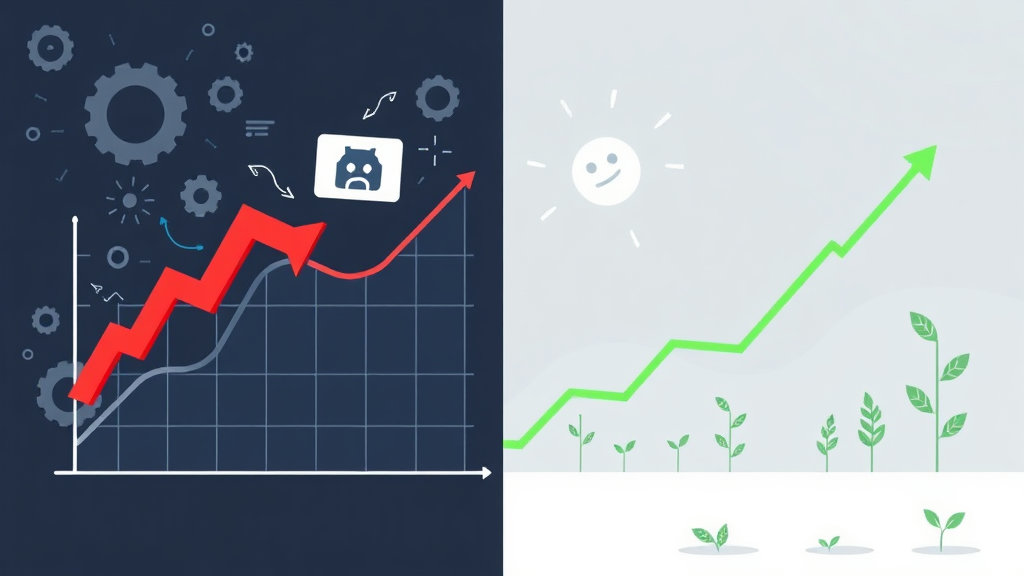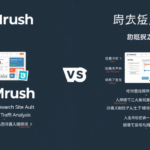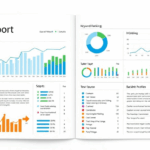How AI-Guided SEO Broke My Ranking and What Fixed It
When AI Tools Start Cannibalizing Your Keyword Maps
So here’s something nobody talks about: when you hand over your keyword research to machine learning tools, sometimes they start merging intent buckets that should stay miles apart. One time, SEMrush’s AI-generated keyword clusters pulled in variations of “best Python laptops” and “Python programming training” into the same pillar group. Guess what happened? The content I published buried itself competing for both searcher types—and it tanked.
This isn’t just about semantic overlap. It’s AI-generated TF-IDF weightings misclassifying related terms as interchangeable. If you’ve ever seen your content rank for completely off-intent SERPs, that’s what’s quietly happening.
Combining NLP-Powered Headline Choosers with Real CTR Data
There’s this thing platforms like Clearscope and Surfer SEO keep trying to solve with GPT-based headline scoring: match your title to trending NLP language priorities suggested by Google’s SERPs… even when your actual users aren’t clicking them. We ran a 50-variant test where high NLP-score titles actually reduced CTR by about half compared to our basic human-written variant. Why? Because the AI-baited phrasing felt way too robotic to a technical audience.
What finally worked was grabbing headline options from the AI, but then filtering them through our actual historical Search Console CTR stats. Pair that with segmented user behavior (especially on mobile), and we built our own tiny model in Sheets that cut AI suggestions off when they started veering into useless clickbait.
One Weird Schema Bug That Tanked Structured Snippets
This one took two days and a full pizza to debug. Google’s page indexing classified one of our FAQs as @type:TechArticle even though we had valid @type:FAQPage markup loaded through GTM. Turns out, the cause was unrelated JSON-LD from a tutorial review widget lower on the page. It injected @type:Article into the root-level DOM, and the ML guessing engine went with that instead.
Undocumented and nowhere in the Search Console docs. What finally helped was running the page through URL Inspector, then manually stripping every hidden widget script until we found the one causing schema bleed-through. Now we always isolate script contexts with inline JSON-LD instead of loading them dynamically from third-party components unless we have full control.
When Googlebot Starts Reinterpreting Your Anchor Text
We had a ton of legacy content where internal links said things like “click here” or “learn more”—and yes, we knew it wasn’t ideal. But after integrating AI content assistant tools that optimized anchor text with semantic models, we thought the problem would fix itself. It actually got weirder.
Based on our crawl logs and some chatter on a private SEO Slack, there’s evidence Google’s NLP systems are now rewriting anchor relevance based on surrounding context. That means if your AI tries to over-optimize an anchor like “advanced SEO techniques”, but the paragraph leans toward schema usage, your link ends up associated with the wrong semantic cluster.
“It’s not just about anchor text anymore. It’s about positional syntax-by-context.” — from one particularly sleep-deprived Slack thread.
I’ve started manually checking how our pages are semantically perceived using tools like Inlinks and comparing them to how Sitelinks or rich results show up days later.
ML Rank Position Estimates Are a Lie Over Time
Everyone I know has gotten addicted to Seeing” AI-powered rank forecasts. You get trends, probability curves, and pretty snowfall-looking charts… until they completely decouple from your real visibility. One weekend, our main keyword dropped 10 spots but the AI predictor still suggested we would “outperform expected CTR due to snippet richness.” Nope. Traffic plummeted and didn’t recover for three weeks until we rolled back a lousy content refresh.
Here’s what I figured out: AI forecasting models base a lot of their ranking trajectory on structured data presence and on rival page age. But if Google rewires the SERP layout (like shuffling video carousels in), the visibility real estate vanishes overnight, and your shiny ML dashboard won’t notice until your Stripe revenue already looks sad.
I now keep a historical SERP screenshot journal. Yep. Ugly, manual, but helpful when the predictive systems get blind to layout volatility.
When Generative Content Fails the Crawl Budget Smell Test
This one hit me on a niche content cluster around local tutorial sites. We used a language model fine-tuned on course descriptions to generate hundreds of localized course previews. The content was readable. It passed AI detection tests. But our crawl budget flatlined for that entire folder.
Here’s what happened:
- All pages were XML-sitemapped properly, but regex-similar content made crawling inefficient.
- Despite full internal links, they were indexed incredibly slowly (some never made it).
- Search Console showed no errors, but log analysis showed Googlebot deprioritizing our page pattern group.
- Customized lead-ins using dynamic geo elements didn’t help—it needed structural variety in paragraph scaffolding.
- We rebuilt the cluster using only five base templates rewritten manually, and crawl stats immediately spiked back up.
There’s honestly no documentation around this. My hunch is Google’s deduplication logic is now flagging same-syntax documents during crawl queue injection, not later at indexing. So the ML isn’t just watching content—it’s watching how it’s shaped.
The Surprising Impact of AI-Predicted Sentiment on SEO Positioning
This might be the strangest thing yet: We think the algorithm is starting to penalize content that carries mismatched emotional sentiment across meta and body. We published a piece where the meta description was generated as super optimistic—”Unlock the secrets to financial freedom with no risk” sort of stuff. Totally AI-written. But the core content was dry and technical as hell, about tax form compliance timelines.
Ranked well for a few hours, then vanished from top 100. We replaced the meta—and within two days, it came back at position 23.
No links, no new crawl. Just a re-render with better-synced emotional tone. Which leads us to believe that BERT or something adjacent is flagging tone dissonance now. Might be mistaken, but we’ve seen it repeat with product review pages too. It’s made us way more conservative about letting AI touch meta content generation.
Latent Entity Drift in Older Articles That Got AI-Enhanced
It’s extremely tempting to hand over your old evergreen content to AI tools for efficient refreshing. We thought we’d nail it by feeding the old text into a custom fine-tuned LLM and asking for entity enrichment and temporal updates. All looked great until our coffee grinder review (yes, random) started ranking for “espresso machine maintenance guides.”
Turns out the AI inferred that espresso drinkers would be interested in maintenance tips and just started dropping related terms haphazardly. Since Google treats some of those as hard entities with strong index signals, it recontextualized the whole article’s focus during the update crawl.
You can’t fully prevent this unless you explicitly prune entity expansion in your generation prompt or use a second QA layer to validate all embedded references. We ended up adding a post-process script that flags all new entities not present in the original crawl version, just so we don’t pollute stable articles with discovery noise.
Might sound overkill, but when revenue on that article dropped to half after a seemingly “harmless” refresh, I started getting very careful with post-AI-diff scans.














